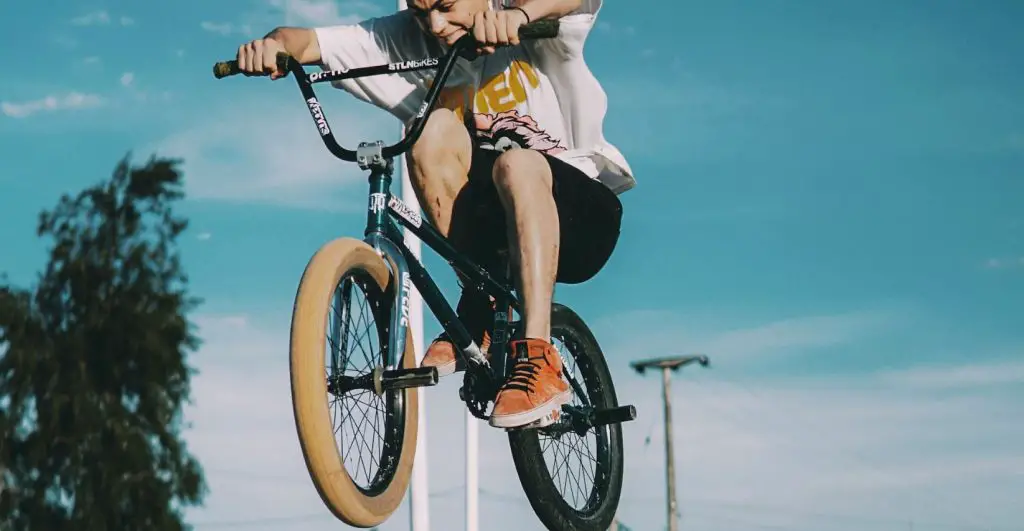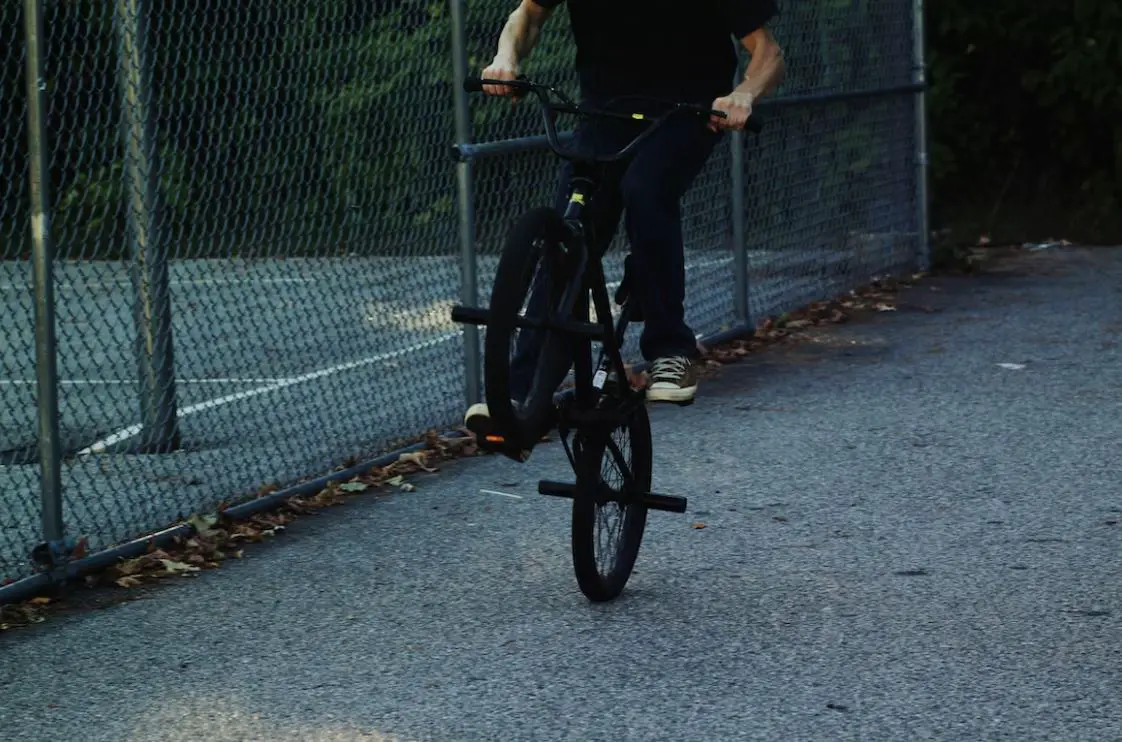Bike pegs are a MUST for performing tricks and stunts, like grinding on rails or ledges. Plus, riding on bike pegs is a fun way for both kids and adults to share a bicycle
However, balancing on pegs while the bike is moving does present some safety concerns.
In this post, I’ll go over the safety risks of riding on bike pegs and show you how to ride on them properly – from preparation to riding.
But first, let’s go over the legal aspects.
Are Bike Pegs Illegal?
First up, you need to keep in mind that riding on bike pegs is not allowed everywhere. It should only be done in skate parks or designated areas for stunts and tricks.
Also Read: Can You Bike On The Highway?
For example, riding on streets is illegal in most states and regions.

So you’ll need to check local laws.
Is It Safe To Ride On Bike Pegs?
Riding on bike pegs is generally safe when done under the right circumstances and with proper precautions.
However, it involves some inherent risks.
Riding with a passenger on pegs changes the handling and balance of the bike. The extra weight on the back can make steering more difficult.
This is even more difficult when riding uphill and on bumpy or uneven terrain.
Plus, the pegs can hit the ground on sharp turns and make you lose control.
Any sudden braking or acceleration can throw the peg rider off balance.
All in all, there is a higher risk of injuries from falls compared to regular bicycle riding. So always wear protective gear like helmets and padded gloves.
Also Read: do BMX bikes have brakes?
Also, adult supervision is highly recommended if kids are riding on bike pegs!
How To Ride On Bike Pegs
Here’s how to ride on bikes properly and safely:
Preparation
Before riding on bike pegs, make sure they are securely installed and tightened onto the rear axle. Loose pegs can wobble and cause the rider to lose balance and fall.

The rider should always wear a helmet for protection. And some sturdy shoes with good grip are also important.
Starting on flat ground is best when first learning to balance on the pegs. Go slow at first without too much speed or sudden braking.
Getting On
Do not jump up onto the pegs while the bike is moving. Get on only when the bike is stopped.
Put one foot up onto the peg, holding onto the main rider’s shoulders for balance. Then bring the other foot up onto the second peg, one at a time.
Your knees should be slightly bent when standing on pegs, not locked straight, and keep your back and arms loose to absorb shocks.
People who are new to this often tend to grip too tightly. This tenses the body and affects balance.
Try holding the rider’s hips lightly instead of wrapping arms tightly around the waist.
Riding
When cycling, the rider should pedal smoothly and steadily to avoid jerky movements that can throw the passenger off balance.
Leaning into turns along with the bike can help avoid scraping the pegs along the ground on sharper turns.
If you feel like you’re losing your balance, press your knees against the rider’s hips to get some balance.
Also Read: Can BMX Bikes Pedal Backwards?
But let the rider know if you need to come to a complete stop and regain control.
Here are a few more things to keep in mind:
- Agree on hand signals. A tap on the left or right shoulder can indicate turning. Two taps to go faster or slow down.
- Lean in unison when cornering and turning. Don’t resist the bike’s tilting.
- Try not to make sudden upper body movements. This throws off the center of gravity.
- For stopping, plant both feet firmly on the pegs and hold on. Don’t wiggle or squirm.
- On bumpy surfaces, keep knees soft to absorb shocks through your legs.
- Uphill grades are challenging. Lean forward and keep your weight centered.
- Downhill, hold the hips firmly and lean back slightly. Avoid death-grip squeezes.
Always keep these in mind, and you’ll never fall down or lose control again.
Can You Add Bike Pegs to Any Bike?
No, you cannot add bike pegs to any bike.
Pegs generally don’t work well on full-suspension mountain bikes, and most road bikes have geometries that can make attaching pegs difficult.
To add them, the bike’s frame design needs an axle and rear triangle sturdy enough to handle the added weight and force from pegs and a passenger.
There also needs to be adequate tire clearance to prevent feet and pegs from contacting the rear wheel or fenders.
FAQs

